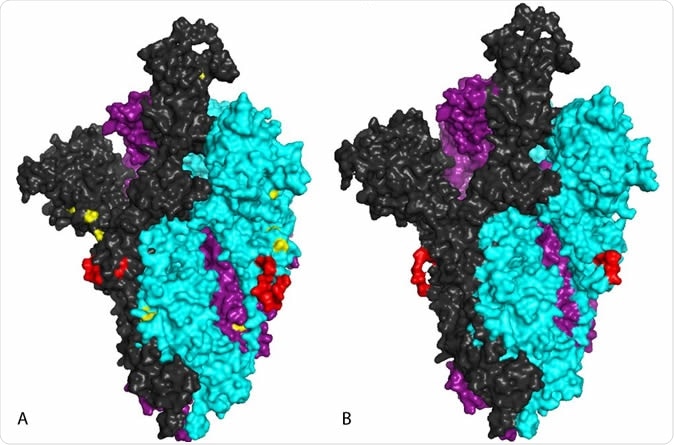A new research paper published by scientists at the University of Bristol who sequenced the genome of the SARS-CoV-2 virus, which is causing the worldwide COVID-19 illness, reveals some significant findings that could help researchers working on rolling out vaccines to stop the relentless march of the virus. The study was published online on the preprint site bioRxiv in April 2020.
The study
The researchers, who work at Bristol’s School of Cellular and Molecular Medicine, cultured the live virus inside monkey and human cells under controlled laboratory conditions. They aimed to identify how the virus manipulates the cellular processes to produce viral transcripts, or RNA copies of the viral genome, in order to generate viral proteins. These can be assembled to form new viral particles, or in some cases, inhibit the host immune response. They also examined the genomic changes in the virus during culture.
The findings
The scientists found that during the growth of the virus inside monkey cells in laboratory culture, the viral surface protein underwent significant alteration. This was due to a change, a 24 nt in-frame deletion, in the RNA transcript that encoded for this protein, called the spike glycoprotein, or S glycoprotein. It was found in more than half the transcripts that were examined at this site. It is thought that this deletion is responsible for removing a proposed furin cleavage site from this glycoprotein, which splits it into its functional subunits at the time when the virus enters or leaves the cell. It is, therefore, essential in allowing the virus to enter the host cell, could reduce its disease-causing capability, and is being investigated as a viral target for the human immune system, to help it counter the viral attack.

A space filled model of the wild type SARS-CoV-2 S glycoprotein in a trimeric form using the sequence of a) the native or b) spike deletant virus, in which the aa’s 679NSPRRARSV687 have been replaced with Ile. The model was built using a cryo-EM structure (6VSB.pdb) of the S glycoprotein in the prefusion form (25). Each of the monomers is colored differently. The loop containing the furin cleavage site (or the shortened loop in the deleted version in b) is indicated in red. The positions of phosphorylation sites identified by mass spectrometry and surface located were mapped on the native structure and shown in yellow in a).
The investigators also found that many of the viral proteins were phosphorylated, or modified by the addition of phosphate groups. This caused a change in the way the viral protein functioned. They may also be useful in identifying the type of drugs that inhibit viral activity and help to treat the infection.
Some existing drugs that have been approved for other medical conditions are known to act by changing the pattern of phosphorylation on certain proteins. Researchers are looking into whether these drugs can be used to inhibit viral replication by altering their phosphorylation.
How are these findings significant?
These results could help scientists working on vaccines against COVID-19 and those who are looking for synthetic antibodies to rescue patients with severe infections. For instance, when the virus is cultured on a large scale, as in a cell culture factory, the spike glycoprotein could undergo alteration. However, to test candidate vaccines and synthetic antibodies, large amounts of the virus must be grown in the laboratory.
The viruses are used to infect animal models of the illness to find out if the vaccine or therapeutic molecules work as expected to prevent the infection in the treated animals. If the viruses used for testing have a different spike glycoprotein than the virus strain used to prepare the therapeutic molecules, it could cause the vaccine or synthetic antibody to be apparently less potent than expected when used in animal trials. This could be the result of changes in virulence, and therefore it could affect the fatality rate and the rate at which animals become symptomatic or sick.
Such trials are essential to push forward vaccine development. If the results of these trials are flawed by changes in the viral proteins during culture, it could seriously affect the progress of research.
In the words of researcher Andrew Davidson, “Teams working on vaccines and drug testing will need to take extra care to make sure the virus is not changing when they grow it up in the lab.”
The study will, therefore, help global research by identifying how laboratory virus culture causes changes in the virus when compared to the wildtype virus found in people. The researchers caution, “The viral genome sequence should be carefully monitored during the growth of viral stocks for research, animal challenge models and, potentially, in clinical samples. Such variations may result in different levels of virulence, morbidity, and mortality.”
Source:
Journal reference: